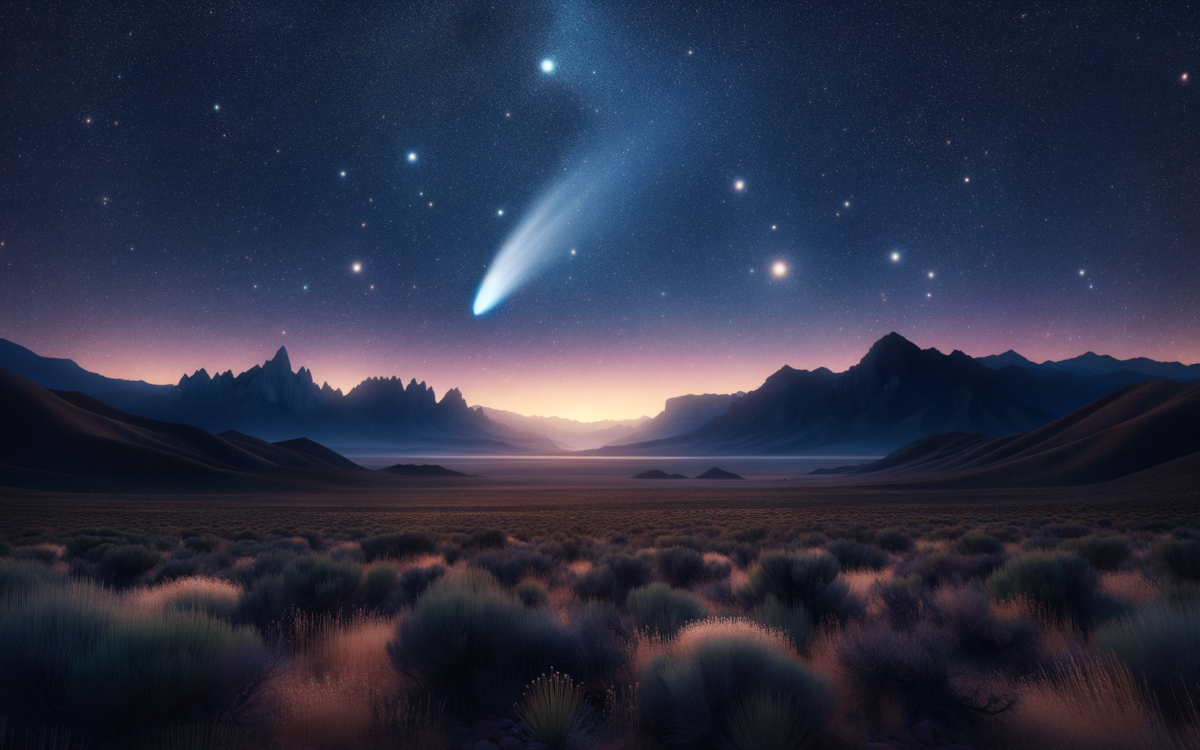Witness a Celestial Wonder: Comet C/2023 A3 Tsuchinshan-ATLAS Graces the Skies
- A once-in-a-lifetime comet, C/2023 A3 Tsuchinshan-ATLAS, is visible from Earth, passing by every 80,000 years.
- The best viewing dates are from October 14 to 24, with optimal times just after sunset.
- The comet has the potential to be seen with the naked eye under perfect conditions, possibly shining as bright as magnitude -1.
A Rare Opportunity for Stargazers
The cosmos is buzzing with excitement as the National Aeronautics and Space Administration (NASA) announces the arrival of a spectacular comet. C/2023 A3 Tsuchinshan-ATLAS is making a rare appearance, passing Earth about once every 80,000 years. For many residents in Utah, this is a celestial event not to be missed.
This comet can be observed from Earth with proper timing and perhaps a pair of binoculars or a small telescope. NASA recommends that the best window for observation falls between October 14 and 24, with the comet currently about 72.8 million kilometers (around 45.24 million miles) away from our planet.
Finding the Best Viewing Spot
While the comet may be tricky to spot during the day, it becomes more visible during twilight hours. According to SkyLive’s Planetarium, during the evenings when the sun sets just before 7:00 p.m. local time, the comet will rise nearly 40 degrees above the horizon, situated above the mighty planets Mercury and Venus in the southwestern sky. So, for those keen on a night under the stars, aim to catch a glimpse about 45 minutes after sunset.
Those planning to observe the comet should check the weather forecast, as the National Weather Service predicts cloud cover for the next couple of nights, which may provide an excellent opportunity for viewing.
The Comet’s Celestial Brightness
In terms of brightness, NASA estimates that Tsuchinshan-ATLAS will have a stellar magnitude ranging between 2 to 4, making it quite challenging to see during daylight. To provide some perspective, stellar magnitude is a logarithmic scale used to measure brightness; a magnitude 1 star is 100 times brighter than a magnitude 6 star. With this scale in mind, Tsuchinshan-ATLAS’s predicted brightness falls short compared to Venus, which shines at a dazzling magnitude of -4.
However, the comet may experience a boost in brightness due to a phenomenon known as “forward scattering.” This intriguing effect occurs when scattered particles are redirected forward, influencing how we perceive the comet’s brightness. With this forward scattering, NASA suggests that the comet’s brightness could reach a spectacular magnitude of -1, making it comparable to the brightest star in our night sky, Sirius. Under such conditions, you could be able to see it with your naked eye!
Jon’s Take
As we stand beneath the great canopy of stars, this comet reminds us that the universe is full of wondrous surprises, waiting to be explored. So, grab your binoculars and step outside during the right window—who knows what celestial magic you might witness! The truth isn’t just out there; it’s right here, shining brightly in our skies.
Original Article




